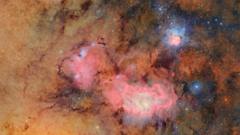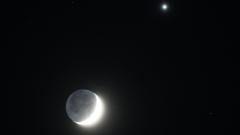In a thrilling turn of events just in time for Halloween, two distinct black holes are capturing the attention of astronomers and igniting curiosity about their cosmic roles. One of these black holes, dubbed the "serial killer," is on the brink of consuming its second star within a five-year span, while the other has been identified as part of an extraordinary three-body black hole system, a first in astronomical observations that defies typical astrophysical theories.
Black holes, often described as the ultimate gravitational traps as predicted by Einstein's general relativity, wreak havoc in their vicinity. There are millions scattered throughout the Milky Way, remnants of stars that succumbed to gravity's inexorable pull. Additionally, almost every galaxy, including our own, contains a supermassive black hole—often millions to billions of times heavier than the sun—at its core.
The "serial killer" black hole first garnered attention five years ago, following the detection of a flare from the heart of a galaxy located 215 million light-years away from Earth. This flare resulted from a star that strayed too closely to the galaxy’s supermassive black hole, resulting in a dramatic tidal disruption event named AT1910qix. Over a span of five months, the star was shredded by the gravitational pull, forming a surrounding ring called an "accretion disk" where material either fell into the black hole or drifted outwards.
Today, the debris from that incident has expanded to such an extent that it's now influencing the orbit of another star. Every 48 hours, this star collides with the remaining disk material, resulting in spectacular emissions of X-rays and other radiation types. A team of researchers led by Matt Nicholl from Queen’s University Belfast has been closely monitoring these events with sophisticated instruments, including the Chandra X-ray Observatory, Hubble Space Telescope, and Neutron Star Interior Composition Explorer. Their findings were recently published in the journal Nature.
In contrast, the other black hole anomaly has baffled astrophysicists. For the first time, astronomers have identified a three-body system involving black holes, which contradicts conventional expectations. This discovery challenges our understanding of black hole dynamics and their formation pathways, suggesting that complex interactions may be more common than previously assumed.
Together, these two cosmic enigmas showcase not only the endless mysteries of black holes but also represent significant strides in our understanding of the interactions that occur in the darkest reaches of the universe.













